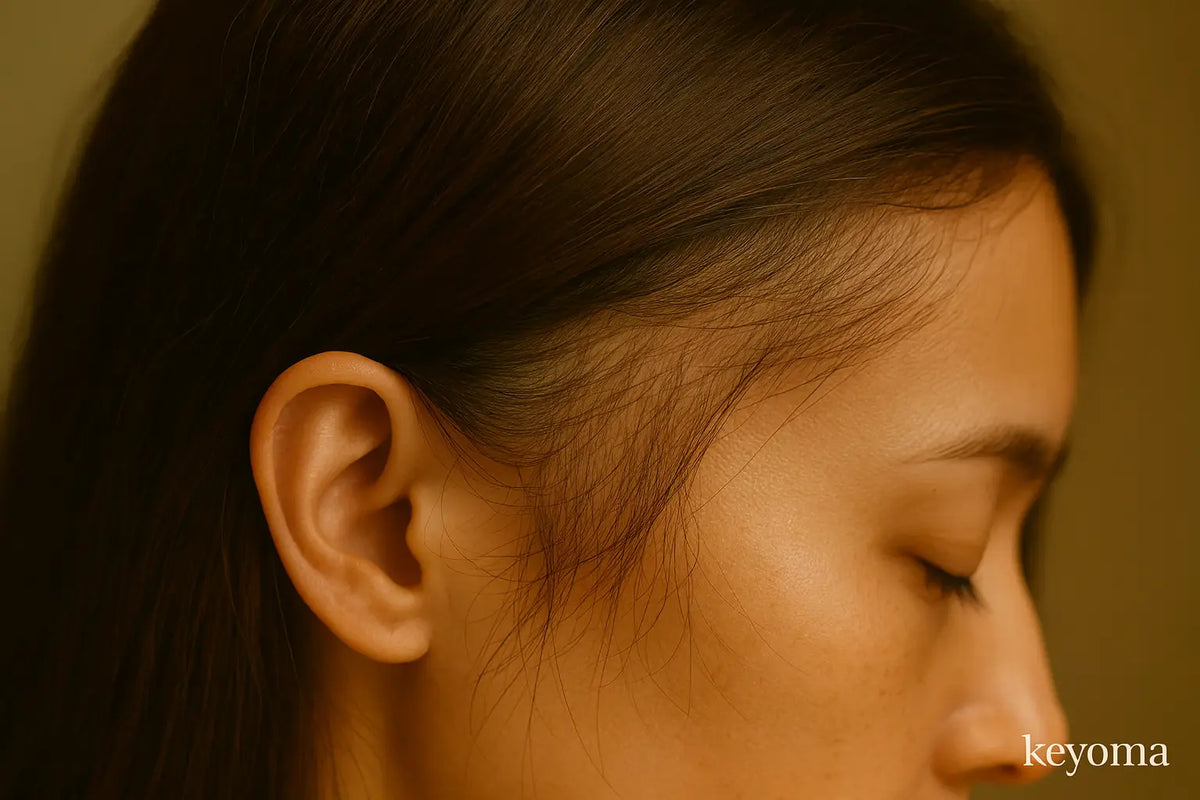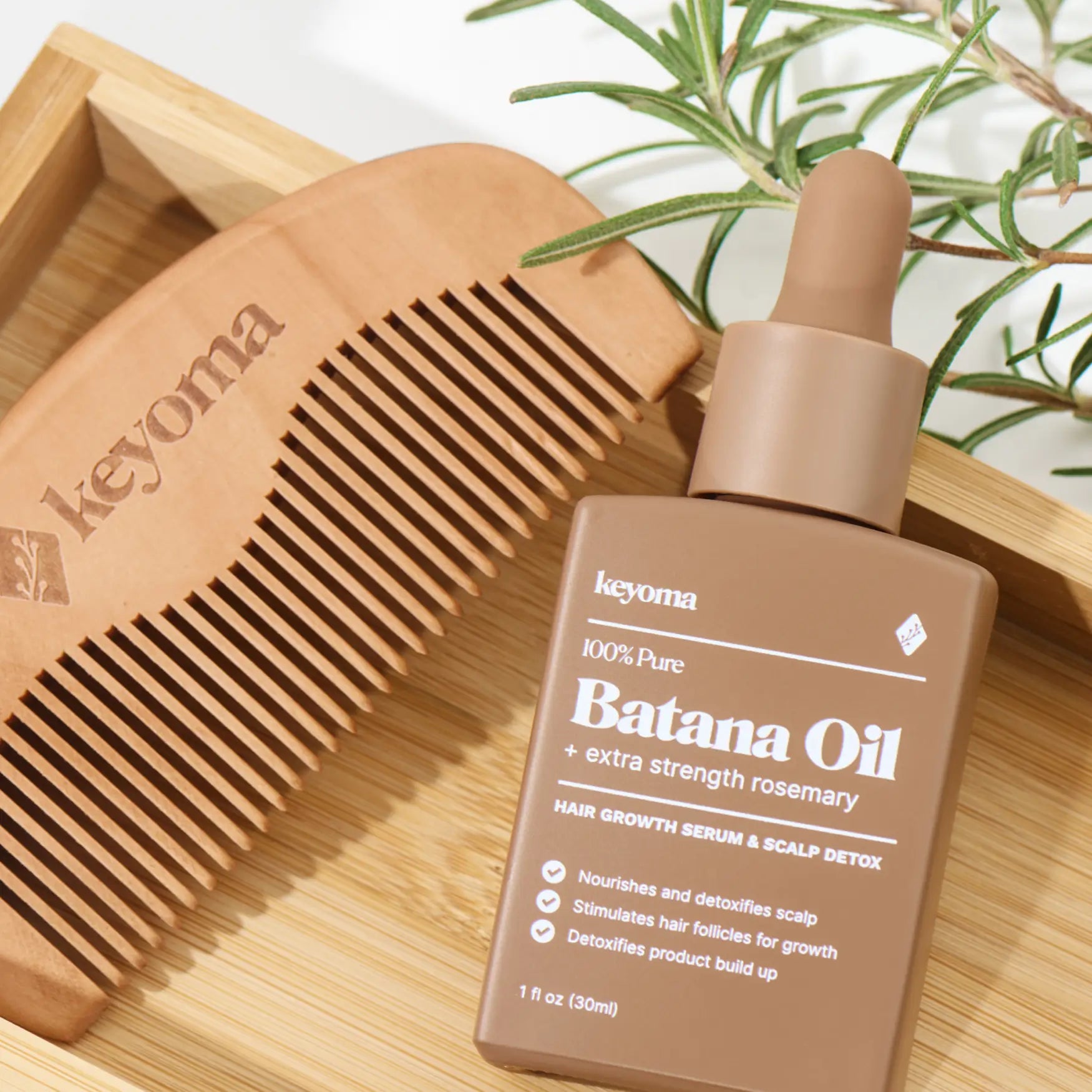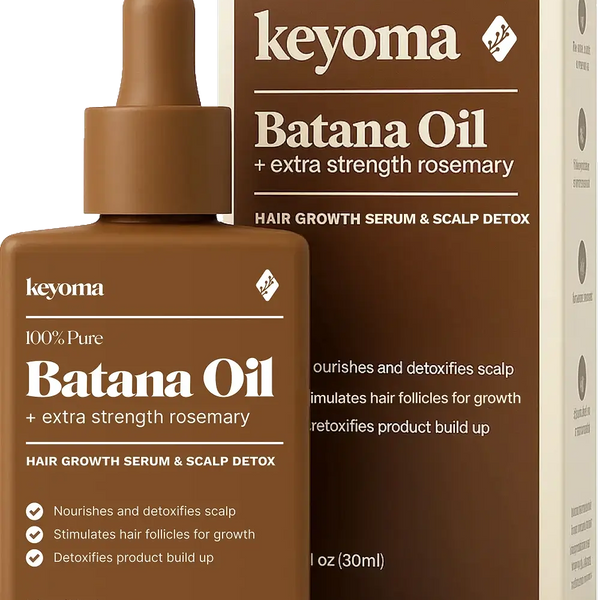In this article
If you use it regularly and in the right way, then yes—hair oil can absolutely help you grow your hair and hold on to more of your natural length. And it’s not just hearsay. Early evidence on certain oils suggests they may give an extra nudge toward growth.
But here’s the thing: hair oils aren’t magic. They can’t create new follicles, and results vary from person to person. Most importantly, they’re not a substitute when genetics or serious medical conditions are at play.
In this article, we’ll go through the ins and outs of how oiling can make a real difference and where its limits truly are.
Key Takeaways
-
Consistent oiling protects hair fibers from breakage and helps retain more of the length you naturally grow.
-
Certain oils can improve scalp comfort, hydration, and microbial balance, creating a healthier growth environment.
-
While some botanicals show early promise in stimulating growth, the main benefit of oiling is in maintaining the hair you already have.
How Hair Oil Promotes Hair Growth
While there's little proof that the chemical makeup of hair oils directly triggers hair growth, oiling still serves a valuable supportive function. It improves hair strength and structure, keeps the scalp comfortable, and helps maintain balanced moisture levels, just to enumerate a few.
Together, these can result in noticeably faster overall length gains by helping you retain more of the length you naturally produce.
Reduces Breakage
When hair oil smooths the cuticle, it gives each strand a protective coating that reduces friction between neighboring hairs and minimizes tangles.
You’ll notice less hair on your brush (or fingers) as you comb through, and for the same reason, everyday styling feels smoother too. Over time, the retained length adds up, and you lose less hair to daily bumps and snags.
For this purpose, argan, coconut, and sunflower oils work well—especially when free from silicones for those who prefer a clean-beauty route.
Protects Against Hygral Fatigue
When hair gets wet, it swells as water soaks in, then contracts again as it dries. Over time, this repeated swelling and shrinking can wear down the cuticle—a type of damage known as hygral fatigue.
In these cases, penetration matters most. Coconut oil remains a classic pre-wash treatment because it penetrates deeply, although batana oil is just as exceptional, slipping inside the hair shaft to slow down this cycle. Your hair feels less puffy and frizz-prone, and detangling becomes much easier with fewer snaps along the way.
Balances Scalp Microbiome
A healthy scalp is home to a balanced community of microbes. When that balance tips, the scalp can start to feel itchy or uncomfortable.
Certain essential oils, like tea tree, have antifungal and anti-inflammatory properties that can help restore that balance. When diluted into a carrier, they work alongside nourishing oils that rebuild the skin barrier and lock in hydration.
This combo makes it difficult for yeast or bacteria to overgrow. And when maintained, it gives your scalp the clean environment it needs to keep producing strong, healthy strands over time.
Supports Scalp Barrier & Hydration
The scalp’s barrier is its first line of defense against dryness and irritation, and certain oils can help keep it strong. Oils with occlusive and emollient qualities slow the escape of water through the skin—a process called transepidermal water loss—so your scalp stays hydrated for longer. Think of it like putting a lid on a pot to keep the steam in.
Jojoba oil, in particular, works much like human sebum, the natural oil your scalp produces. This similarity helps it restore balance and strengthen the scalp’s protective barrier.
Almond oil is also a great alternative, considering it’s naturally rich in biotin (vitamin B7). While research is limited, some studies suggest that applying biotin directly to the scalp may help support hair growth.
Improve Scalp Microcirculation
Through oil-assisted scalp massage, you can improve local blood circulation in the scalp. The gentle pressure and movement involved trigger mechanotransduction, a process where mechanical stimulation prompts beneficial biological responses in the skin and follicles.
Together, these effects can help create a scalp environment that’s more welcoming to healthy hair growth. For best results, use a lightweight carrier oil to provide slip and avoid tugging at the hair.
Promote Growth Signals
Some botanical oils show intriguing, though still early, evidence for influencing hair growth signals. Rosemary oil, for example, has been compared to low‑strength minoxidil in a small human trial where participants saw similar increases in the number of hairs.
In another study, peppermint oil was found to help trigger the anagen (active growth) phase in animal studies. We don’t yet have proper human trials to back it up, but it’s an encouraging early finding.
All that’s to say certain oils may help keep your hair in the growth phase for longer, potentially leading to more visible length over time.
Keeps Actives in Place
Some oils and esters don’t just nourish. They can also help your other scalp treatments work better. By acting like a “carrier,” they help serums or tonics spread more evenly and stay where they’re needed, instead of pooling in one spot.
So, if you use hair oil alongside a growth serum or leave-on treatment, go for something light, like jojoba or sunflower oil. They add just enough slip without leaving heavy buildup, so the treatment underneath can still get through and do its job.
Simple Oiling Tips for Hair Growth
Below are some of our simple tips to make the most of every drop of your hair oil so you can give your scalp and strands the best possible conditions for growth.
-
Match your oil to your hair and scalp type. Batana oil is a favorite for nourishing dry or damaged hair, while jojoba oil—because it’s similar to your scalp’s own sebum—works well for oily or acne-prone scalps. You can read more about matching oils to your needs in our full guide.
-
Include scalp massage in your hair oiling routine. You can do this for as little as for 4 to 5 minutes per session.
-
Find an oiling schedule that works for you:Many people use hair oil every day, but to avoid greasiness, a sweet spot for most is about 2–3 times per week for pre‑wash treatments.
-
Do a quick safety check with a patch test: Apply a diluted blend to the inner arm or behind the ear, leave it for 24 hours, and watch for redness, itching, or bumps before using on the scalp.
-
Keep essential oil concentrations safe: For scalp leave‑ons, stay at or below 1% total essential oil content. Additionally, avoid phototoxic citrus oils if you’ll be in the sun soon after.
When Hair Oils Don’t Work Anymore
While hair oils can support healthy growth and help you keep more of the hair you naturally grow, they shouldn’t be treated as a full substitute, especially if an underlying health condition is causing your hair loss or if there’s another issue that warrants medical attention.
Here are some signs and situations where it’s best to see a health professional:
Biological conditions that oils can’t fix
-
Androgenetic alopecia (pattern hair loss)
-
Autoimmune disorders affecting the scalp
-
Scarring alopecias
Red flags that need medical input
-
Sudden, widespread shedding
-
Bald patches
-
Burning, pain, or thick scaling on the scalp
-
A part that’s quickly getting wider
-
Hairline recession at the temples
-
Postpartum shedding that continues beyond 6–9 months
If oils aren’t helping after 12 weeks
If your hair still feels just as fragile or your scalp isn’t any more comfortable after about three months, it might be worth checking in with a dermatologist.
They can help pinpoint what’s really going on and talk you through proven options. In most cases, you can still keep using your oils alongside these treatments for extra comfort and scalp care.
Frequently Asked Questions (FAQs)
When will I notice results from hair oiling?
You might notice your ends feel smoother and you’re losing fewer strands within a few weeks. Bigger changes. like holding on to more length or seeing your hair look fuller, usually show up in as early as 3 months.
Does hair oil directly grow new hair?
Science says not exactly. It’s not the oil’s chemical makeup that directly makes hair grow. Instead, certain oils help keep the scalp healthy and create the right conditions for growth. This supports the hair you already have, helping it stay stronger and grow longer without breaking as easily.
Which oil should I choose for growth goals?
There’s no one or two best hair regrowth oils. It all depends on what your hair and scalp need most. Batana oil is great for deep nourishment and repair. Coconut oil helps reduce breakage. Rosemary oil (always diluted) may also support growth signals, as some studies suggest.
Is it safe for color-treated hair?
Generally yes, especially with carrier oils. Still, patch test first and go light on heavy essential oil blends, which can sometimes speed up color fade.
Will oil make dandruff worse?
Some experts claim that hair oil, especially heavy oils, can make dandruff worse, the reason being that it tends to trap yeast on the scalp. If you have a dandruff-prone scalps, stick to lighter oils and consider antifungal options like low-dilution tea tree oil.
Final Thoughts on Hair Oils and Growth
Hair oils can be a great partner in keeping the hair you already have looking and feeling its best. They help you hold on to more length, protect each strand, and boost overall shine and smoothness. Just keep in mind—they can’t regrow hair lost to medical causes, and they’re not a substitute for proven treatments when those are needed.
If you’d like more practical tips on how to choose, apply, and pair oils with the rest of your routine, the Keyoma blog has plenty of step‑by‑step guides and comparisons to help you get started.
Featured Product
100% Pure Batana Oil + Rosemary









